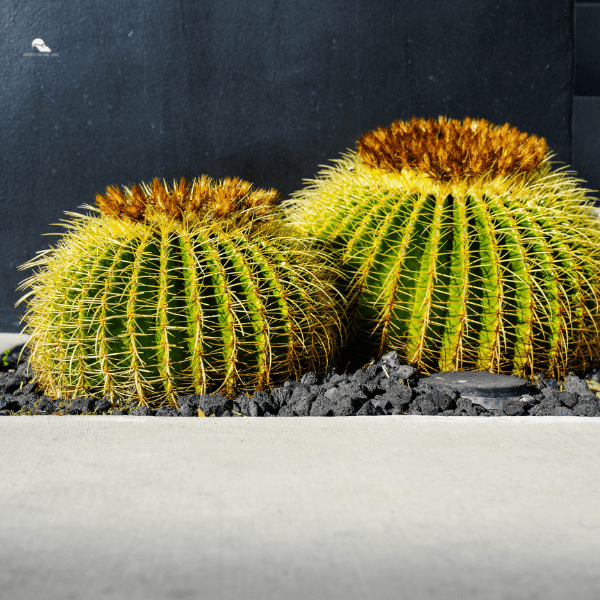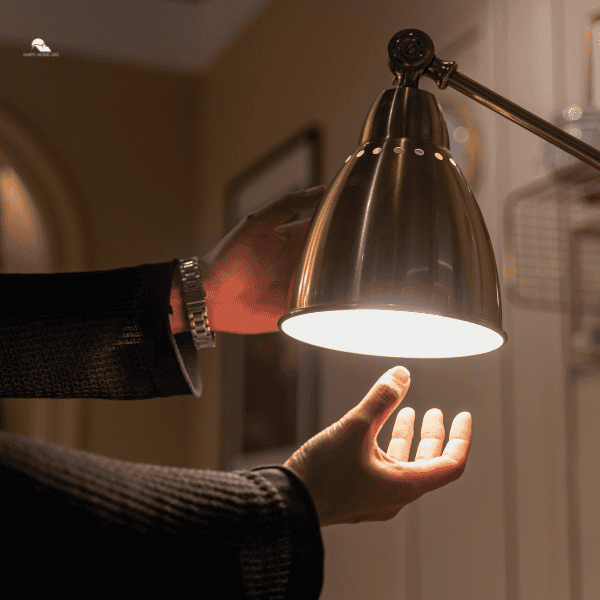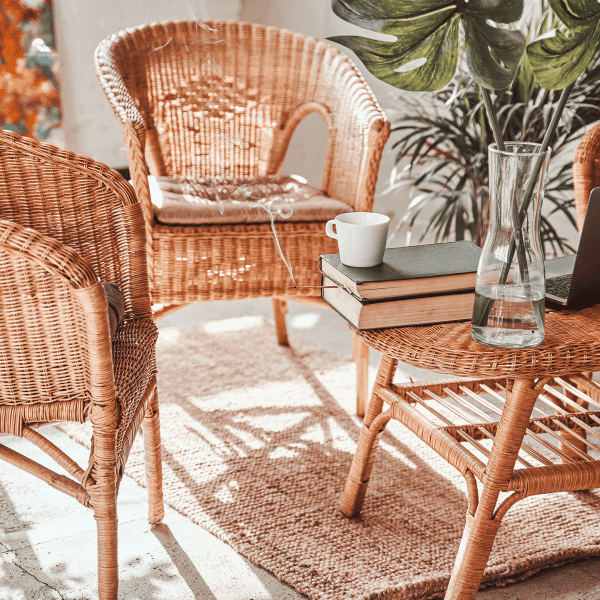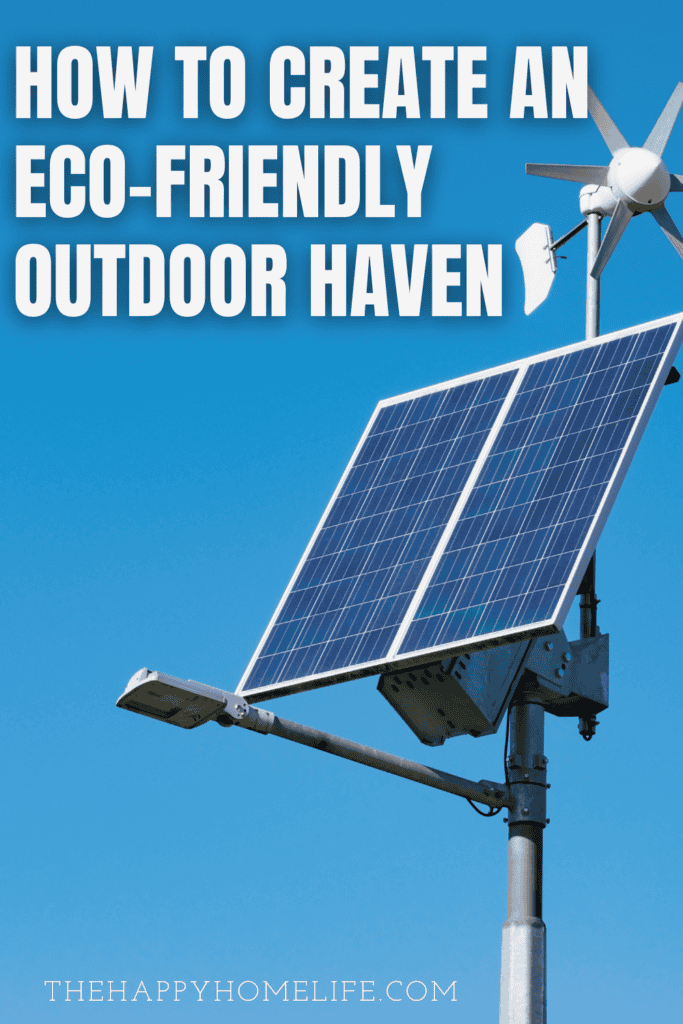Homeowners can create beautiful, functional, and eco-friendly outdoor spaces with sustainability strategies, such as using sustainable materials, trying energy and water-efficient solutions, and growing a biodiverse garden.
By using these strategies, homeowners can enjoy a beautiful and functional backyard and contribute to environmental conservation at the same time.

Here are the best sustainability strategies homeowners can try.
Use Sustainable Materials
Sustainable materials are a key component of any eco-friendly backyard renovation. They are typically sourced responsibly, have a low environmental impact, and can often be recycled or composted at the end of their life.
Here are some sustainable materials to consider:
- Bamboo: It’s a fast-growing resource that can be used for fencing, furniture, and even outdoor flooring.
- Composite Decking: It’s made from a mixture of wood fibers and recycled plastic. It’s a durable and low-maintenance alternative to traditional wood decking.
- Cork: This is harvested from the bark of cork oak trees without harming the tree. It’s a great material for outdoor furniture and flooring.
- Natural Stone: Granite, limestone, slate, and other natural stones are durable and long-lasting materials for patios and walkways.
- Reclaimed Wood: This is wood salvaged from barns and other structures. It can be used for decking, furniture, and decorative elements.
- Recycled Metal: Recycled metal, such as aluminum and steel, is a durable and recyclable material for furniture and structures.
- Recycled Plastic: This is made from post-consumer waste, reducing the amount of plastic that ends up in landfills. It can be used for decking and furniture.
By using sustainable materials, homeowners are not only creating a beautiful space but also reducing their carbon footprint and supporting eco-friendly practices.
| Bonus Eco-Tip: Don’t forget to consider the manufacturing process when selecting sustainable materials. Look for materials that are locally sourced to minimize transportation emissions. And choose options with a long lifespan to reduce waste. |
Incorporate Water-Saving Features
Incorporating water-saving features in the backyard is an essential part of sustainable landscaping. There are several strategies homeowners can employ to conserve water, reduce their environmental footprint, and even save on their water bills.
Try these strategies:
- Drought-Tolerant Plants: These plants, often native to the area, require less water than traditional plants and can survive in dry conditions. Examples include succulents, lavender, and certain types of grasses like buffalo grass.
- Efficient Irrigation Systems: Drip irrigation systems deliver water directly to the base of the plant, reducing evaporation and runoff. Also consider installing a smart irrigation controller that adjusts watering based on weather conditions.
- Mulching: By covering the soil around plants with a layer of organic material like wood chips or straw, backyards can reduce evaporation, suppress weeds, and improve soil health.
- Permeable Paving: Permeable paving allows water to seep through the surface and into the ground, reducing runoff and recharging groundwater.
- Rain Barrels: Rain barrels collect and store rainwater from the roof. The collected water can be used later for watering plants, washing cars, or other outdoor uses.
- Rain Gardens: These are shallow planted depressions that collect rainwater from the roof, driveway, or other hard surfaces. The water is then absorbed into the ground rather than flowing into storm drains.
By incorporating these water-saving features, homeowners can create a beautiful and sustainable backyard that is not only good for the environment but also beneficial for their wallet.

Try Eco-Friendly Lighting Options
Eco-friendly lighting options for outdoor spaces are increasingly becoming popular due to their energy efficiency and minimal environmental impact. They help reduce energy consumption and contribute to a sustainable and green backyard.
Here are the most common eco-friendly lighting options:
- Energy Star Certified Lights: These lights meet strict efficiency guidelines set by the U.S. Environmental Protection Agency. They use less energy and last longer than non-certified lights.
- LED Lights: These lights are energy-efficient and have a longer lifespan compared to traditional incandescent or halogen bulbs. They also use less electricity and produce less heat.
- Low Voltage Lights: These lights use less electricity than regular lights, making them an energy-efficient choice for outdoor lighting.
- Motion Sensor Lights: These lights only turn on when they detect movement. They are ideal for areas that are infrequently used, such as side yards and storage sheds.
- Solar Lights: These lights harness energy from the sun during the day and use the energy to power themselves at night. They are easy to install and require minimal maintenance.
Here is a comparison table of the different eco-friendly lighting options:
| Lighting Option | Energy Efficiency | Lifespan | Special Features |
| Energy Star Certified Lights | High | Long | Meet strict efficiency guidelines |
| LED Lights | High | Long | Available in various brightness levels and colors |
| Low Voltage Lights | Medium | Medium | Ideal for landscape lighting |
| Motion Sensor Lights | Medium | Long | Only turn on when movement is detected |
| Solar Lights | High | Medium | Renewable solar energy |
Choosing the right eco-friendly lighting option depends on the specific needs and layout of the backyard. It’s also important to consider the initial costs, maintenance requirements, and aesthetic appeal of the lights.
Consider Eco-Friendly Outdoor Heating and Cooling Options
Outdoor heating and cooling systems are essential for maintaining comfort in the backyard, especially during extreme weather conditions. But traditional systems can consume a significant amount of energy, leading to high utility bills and increased carbon emissions.
Here are several eco-friendly options to help maintain a comfortable outdoor temperature while minimizing environmental impact:
- Energy-efficient appliances: These appliances are designed to consume less energy than their traditional counterparts. Look for products with an Energy Star rating. These meet strict energy efficiency guidelines set by the U.S. Environmental Protection Agency.
- Geothermal systems: These systems use the stable temperature of the earth to heat and cool outdoor spaces. They involve buying pipes underground and circulating a fluid through them. They can be expensive to install, but they can provide significant energy savings in the long run.
- Natural heating and cooling methods: There are several natural methods to heat and cool the backyard. For example, outdoor fireplaces can provide warmth during cold nights and shade structures can create a cooler backyard by blocking the sun’s rays.
- Solar-powered systems: These systems harness the power of the sun to regulate outdoor temperatures. They can be particularly effective in sunny climates and can significantly reduce reliance on fossil fuels.
By choosing eco-friendly options for outdoor heating and cooling, homeowners can enjoy their backyard year-round while also doing their part to protect the environment.

Buy Sustainable Outdoor Furniture
When it comes to outdoor furniture, there are several sustainable options available that are both eco-friendly and stylish. They often involve the use of recycled, reclaimed, or renewable materials. And they can be just as durable and comfortable as traditional furniture.
Here are the best sustainable options:
- Bamboo: Bamboo furniture can be a bit more expensive than other options. But it’s a great investment for those looking for long-lasting and sustainable furniture.
- Organic or recycled fabrics: Organic cotton, hemp, and recycled polyester are excellent choices for cushions and other accessories. Avoid materials treated by harmful chemicals or dyes.
- Reclaimed wood: Reclaimed wood furniture is made from wood salvaged from barns and other structures. It has a unique and rustic charm that homeowners may love.
- Recycled plastic: This type of furniture is often made from post-consumer waste such as detergent bottles and milk jugs. It’s highly durable, resistant to weather and UV rays, and available in a wide range of colors and styles.
- Recycled metal: Recycled aluminum or steel is highly durable and resistant to rust and corrosion. This makes recycled metal furniture ideal for outdoor use.
Consider the durability, quality, and environmental impact of the choices above. The most sustainable choices are often the ones that last the longest.
| Fact: Sustainable outdoor furniture helps conserve natural resources and minimizes carbon emissions. For example, using reclaimed wood furniture reduces the need for new timber harvesting. |
Grow a sustainable garden
A sustainable garden is not just environmentally friendly. It can also add a unique beauty and charm to outdoor spaces because it’s teeming with life.
Grow a sustainable garden by attracting beneficial insects, promoting biodiversity, supporting local wildlife, trying sustainable agriculture, and using native plants.
- Attract beneficial insects: Attract creatures that play a crucial role in pollination, pest control, and biodiversity maintenance. Flowering plants can attract pollinators. Undisturbed areas of the garden can attract ground beetles and spiders. And avoiding pesticides can help prevent harming these beneficial insects and maintain a balanced ecosystem.
- Promote biodiversity: Add plants and create habitats for different species to promote biodiversity. Adding plants like nectar-rich flowers can provide food for pollinators such as bees and butterflies. Building a pond or water feature can attract amphibians and provide water to birds and mammals.
- Support local wildlife: Pest control is great if the goal is to get rid of hornets, wasps, and other unwanted garden guests. But this doesn’t mean that the garden has to be a hostile place for all kinds of wildlife. Provide food and water sources such as bird feeders for birds, log piles and ponds for frogs, and squirrel feeders for squirrels.
- Try sustainable agriculture: By trying sustainable agriculture, homeowners can participate in the food production cycle and minimize their environmental impact. One way to do this is to introduce Rhode Island chickens to outdoor spaces. They can provide fresh eggs to homeowners.
- Use native plants: Native plants adapt to local conditions, making them more resilient to local weather, pests, and diseases. This also means they require less maintenance compared to non-native species. These plants also preserve the unique flora and character of the region.
It’s important to research the specific needs of local wildlife in the homeowner’s area. This way, they can ensure they are effectively adding the right elements in their garden to attract the local wildlife.

Summary
Reimagine outdoor spaces by renovating the backyard with sustainability in mind. This involves utilizing a variety of techniques like using eco-friendly materials, trying energy and water-efficient solutions, and creating a biodiverse garden.
By adopting these strategies, homeowners can contribute to environmental conservation while enjoying a functional and aesthetically pleasing outdoor space.






